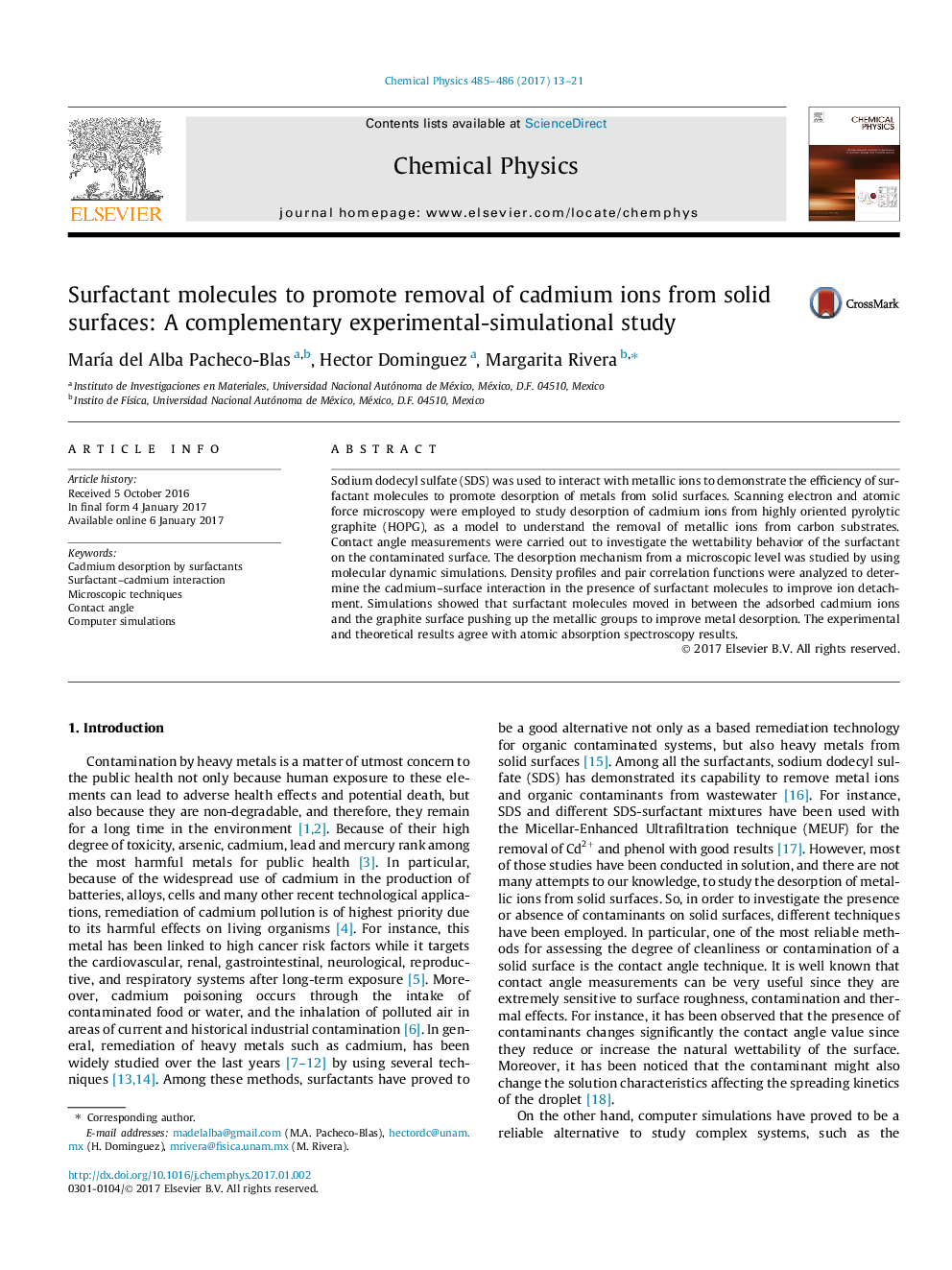| Article ID | Journal | Published Year | Pages | File Type |
|---|---|---|---|---|
| 5372728 | Chemical Physics | 2017 | 9 Pages |
â¢Sodium dodecyl sulfate (SDS) improves desorption of cadmium contaminated graphite.â¢Microscopy techniques show changes on the surface indicating desorption of cadmium.â¢Molecular dynamic show how the surfactant penetrates into the solid-cadmium interface.â¢Contact angle measurements agree with molecular dynamics simulations.
Sodium dodecyl sulfate (SDS) was used to interact with metallic ions to demonstrate the efficiency of surfactant molecules to promote desorption of metals from solid surfaces. Scanning electron and atomic force microscopy were employed to study desorption of cadmium ions from highly oriented pyrolytic graphite (HOPG), as a model to understand the removal of metallic ions from carbon substrates. Contact angle measurements were carried out to investigate the wettability behavior of the surfactant on the contaminated surface. The desorption mechanism from a microscopic level was studied by using molecular dynamic simulations. Density profiles and pair correlation functions were analyzed to determine the cadmium-surface interaction in the presence of surfactant molecules to improve ion detachment. Simulations showed that surfactant molecules moved in between the adsorbed cadmium ions and the graphite surface pushing up the metallic groups to improve metal desorption. The experimental and theoretical results agree with atomic absorption spectroscopy results.
Graphical abstractDownload high-res image (76KB)Download full-size image
